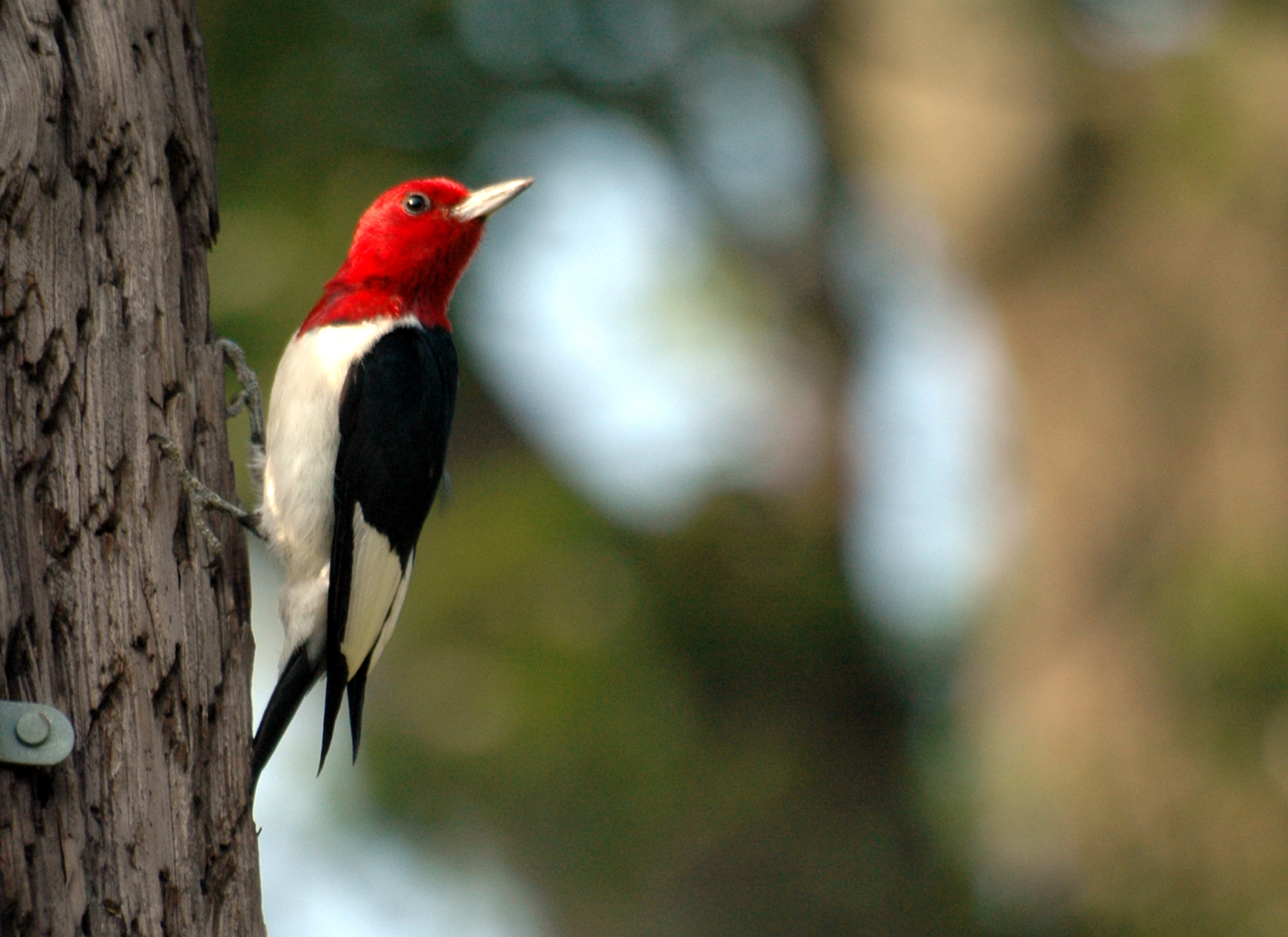Several species of woodpeckers live on Owl Acres. In the winter, we see the downy woodpeckers and hairy woodpeckers at the bird feeder. Once in a while a red-bellied woodpecker visits the feeder as well. Northern flickers live in the woods, and a red-headed woodpecker was seen climbing a tree outside the dining room window last winter.
The head, neck and upper breast of our red-headed woodpecker is all red. His back and tail are black, and his wings are black with large white patches on them. His lower chest and belly are white. His eyes are black, and he has a long, strong bill. This flamboyant coloration has earned him several nicknames, including half-a-shirt, jellycoat, flagbird, and the flying checkerboard. He has a short, stiff tail and rounded head with a spikey beak. Between the size of a robin and a crow, his wings span 14 to 17 inches, and his head to tail measures about nine inches.
Red-headed woodpeckers were once so common in North America that John J. Audubon reported 100 being shot out of a single tree. Today their population is steadily dwindling, losing 1 percent per year since the 1960s. They’re not being hunted now, but several factors have combined to constitute food and habitat loss. Like other woodpeckers, they build their nests in cavities drilled out of dead or rotting wood. They used to have vast resources in the eastern forests. With the forests removed in favor of human habitation and farming, those resources have shrunk Today, they may resort to building their nests in telephone poles, wooden fence posts and even sometimes under roofs. One issue with these new options for nests comes in the form of the creosote treatment of fence posts and telephone poles. Birds that nest in these locations often have failed nests probably because of the chemicals in the wood.
Another hazard for these little birds comes with roads and highways. Red-headed woodpeckers are excellent flycatchers, preferring to catch their prey on the wing., They will perch until an insect flies by, then dart out to capture it. This all too often leads them into the path of oncoming automobiles. Red-headed woodpeckers rely on these flying meals much more than the insects other woodpeckers drill for in dead tree branches. Unlike his woodpecker cousins, the red-headed fellow also stores some of his food for future consumption, covering the cache with bark to hide it from competitors. The unwitting grasshopper may find itself wedged tightly into a crevice where, alive, it awaits its fate.
Red-headed woodpeckers will eat anything, though, including fruits, nuts, and seeds. They also eat berries and fruits such as apples and cherries. In the past, they relied on acorns and beechnuts for a significant part of their diets. Fewer oak and beech forests mean fewer acorns and beechnuts and are one piece of the puzzle of decline.
Red-headed woodpeckers are native to North America, and fossils found in Illinois, Florida and Virginia dating back two million years attest to their longevity. An individual bird may live several years in the wild if not captured by larger birds, snakes, foxes, flying squirrels, or cats. In turn, they will eat the nestlings and eggs of other smaller birds.
Red-headed woodpeckers have a number of calls. One common call is a high-pitched screech. It is similar to the red-bellied woodpecker but higher-pitched. The red-headed woodpecker also makes a low-pitched cherring sound. It uses drumming in short, one-second bursts, to communicate as well.
Long-distance migration into Central and South America is not part of the red head’s repertoire. Short-distance migration within the United States in fall and spring are common, though with birds traveling in small groups to warmer places. We haven’t seen our redheads around for a few months, so we assume they’ve gone farther south to wait out the winter.
Photo from Wikimedia.org. Alt text: White and black bird with a crimson head, round, black eye and slender beak, looks over its shoulder as it clings to a tree trunk. Red Headed Woodpecker
